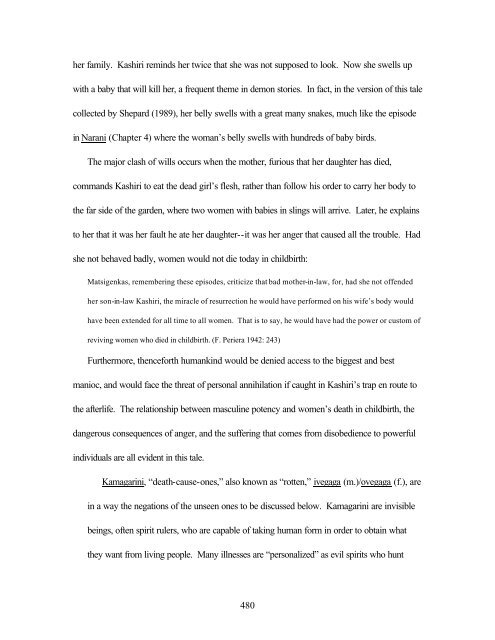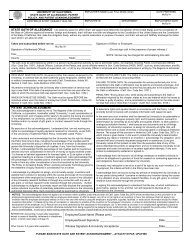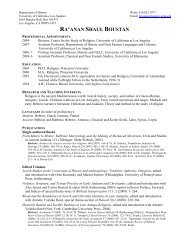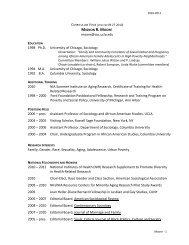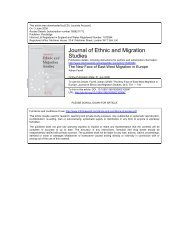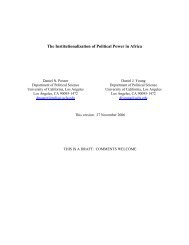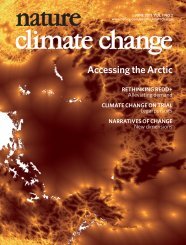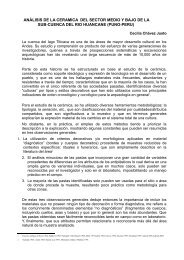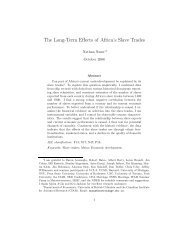433 Chapter Seven Cosmos For the Matsigenka of Shimaa, kameti ...
433 Chapter Seven Cosmos For the Matsigenka of Shimaa, kameti ...
433 Chapter Seven Cosmos For the Matsigenka of Shimaa, kameti ...
Create successful ePaper yourself
Turn your PDF publications into a flip-book with our unique Google optimized e-Paper software.
her family. Kashiri reminds her twice that she was not supposed to look. Now she swells up<br />
with a baby that will kill her, a frequent <strong>the</strong>me in demon stories. In fact, in <strong>the</strong> version <strong>of</strong> this tale<br />
collected by Shepard (1989), her belly swells with a great many snakes, much like <strong>the</strong> episode<br />
in Narani (<strong>Chapter</strong> 4) where <strong>the</strong> woman’s belly swells with hundreds <strong>of</strong> baby birds.<br />
The major clash <strong>of</strong> wills occurs when <strong>the</strong> mo<strong>the</strong>r, furious that her daughter has died,<br />
commands Kashiri to eat <strong>the</strong> dead girl’s flesh, ra<strong>the</strong>r than follow his order to carry her body to<br />
<strong>the</strong> far side <strong>of</strong> <strong>the</strong> garden, where two women with babies in slings will arrive. Later, he explains<br />
to her that it was her fault he ate her daughter--it was her anger that caused all <strong>the</strong> trouble. Had<br />
she not behaved badly, women would not die today in childbirth:<br />
<strong>Matsigenka</strong>s, remembering <strong>the</strong>se episodes, criticize that bad mo<strong>the</strong>r-in-law, for, had she not <strong>of</strong>fended<br />
her son-in-law Kashiri, <strong>the</strong> miracle <strong>of</strong> resurrection he would have performed on his wife’s body would<br />
have been extended for all time to all women. That is to say, he would have had <strong>the</strong> power or custom <strong>of</strong><br />
reviving women who died in childbirth. (F. Periera 1942: 243)<br />
Fur<strong>the</strong>rmore, <strong>the</strong>nceforth humankind would be denied access to <strong>the</strong> biggest and best<br />
manioc, and would face <strong>the</strong> threat <strong>of</strong> personal annihilation if caught in Kashiri’s trap en route to<br />
<strong>the</strong> afterlife. The relationship between masculine potency and women’s death in childbirth, <strong>the</strong><br />
dangerous consequences <strong>of</strong> anger, and <strong>the</strong> suffering that comes from disobedience to powerful<br />
individuals are all evident in this tale.<br />
Kamagarini, “death-cause-ones,” also known as “rotten,” ivegaga (m.)/ovegaga (f.), are<br />
in a way <strong>the</strong> negations <strong>of</strong> <strong>the</strong> unseen ones to be discussed below. Kamagarini are invisible<br />
beings, <strong>of</strong>ten spirit rulers, who are capable <strong>of</strong> taking human form in order to obtain what<br />
<strong>the</strong>y want from living people. Many illnesses are “personalized” as evil spirits who hunt<br />
480


